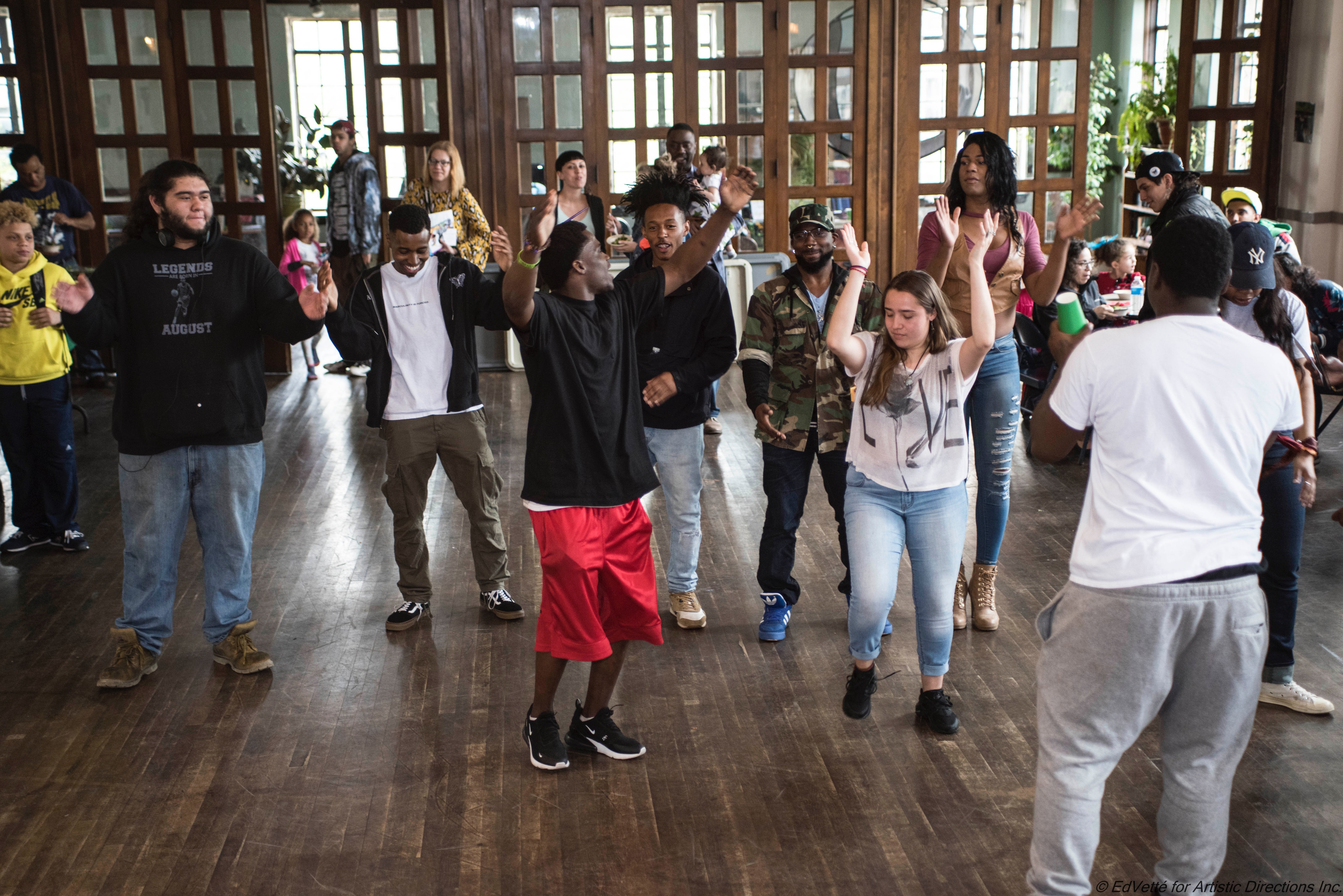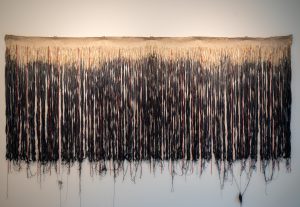In the fall of 2017, I began attending Rogers Park Community Peace Circle as outreach for the Kola Nut Collaborative, a timebanking initiative where people trade skills and services using time as a currency. While I had participated in other spaces employing circle facilitation, the Community Peace Circle enriched my understanding of some basic rituals associated with circle keeping including lighting a candle, introducing talking pieces, and building shared values to be held during the circle. It would be several more months before I would realize the relationship between Circles & Ciphers and the Community Peace Circle as each entity re-formed and merged under a new mission statement.
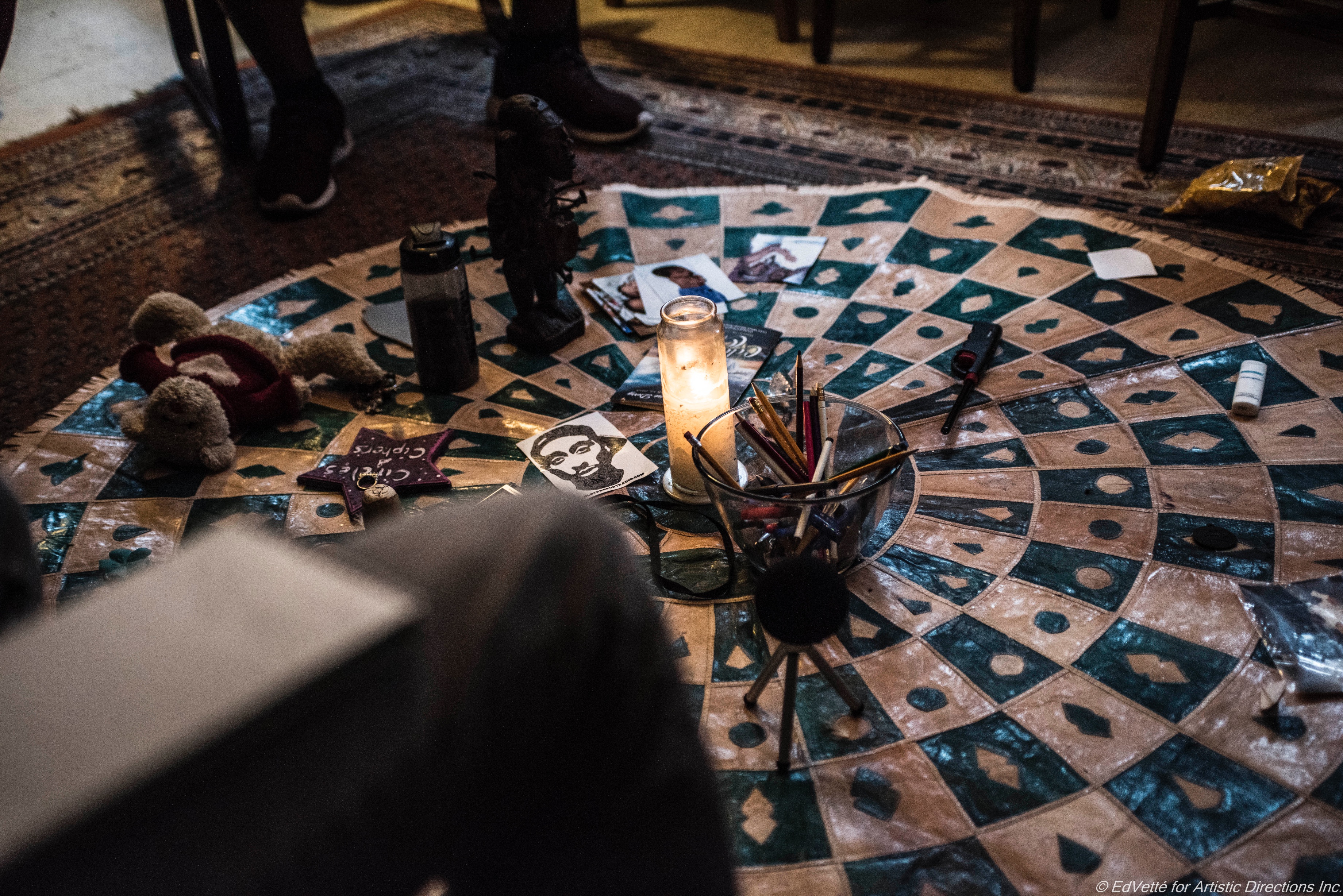
This mission explains that, “Circles & Ciphers is a hip-hop infused restorative justice organization led by and for young people impacted by violence. Through art-based peace circles, education, and direct action we collectively heal and work to bring about the abolition of the prison-industrial complex.”
While the name struck me as familiar, I was unclear about Circles & Ciphers’ history, use of peace circle facilitation or desired outcomes for its practice. Envisioning Justice, an Illinois Humanities initiative on the impacts of incarceration across the city, presented an opportunity to make deeper inquiry into a space which had grown significant in my own life in a short period of time. Initial contact with the Envisioning Justice hub was awkwardly exacerbated by the matter of fact approach I brought to our email exchanges and misinterpreted emotional cues. On the day of our first meeting, Emmanuel Andre, co-founder and co-director of the organization, confessed of email: “I hate it,” explaining further how much communication is lost in the absence of an in-person interaction.
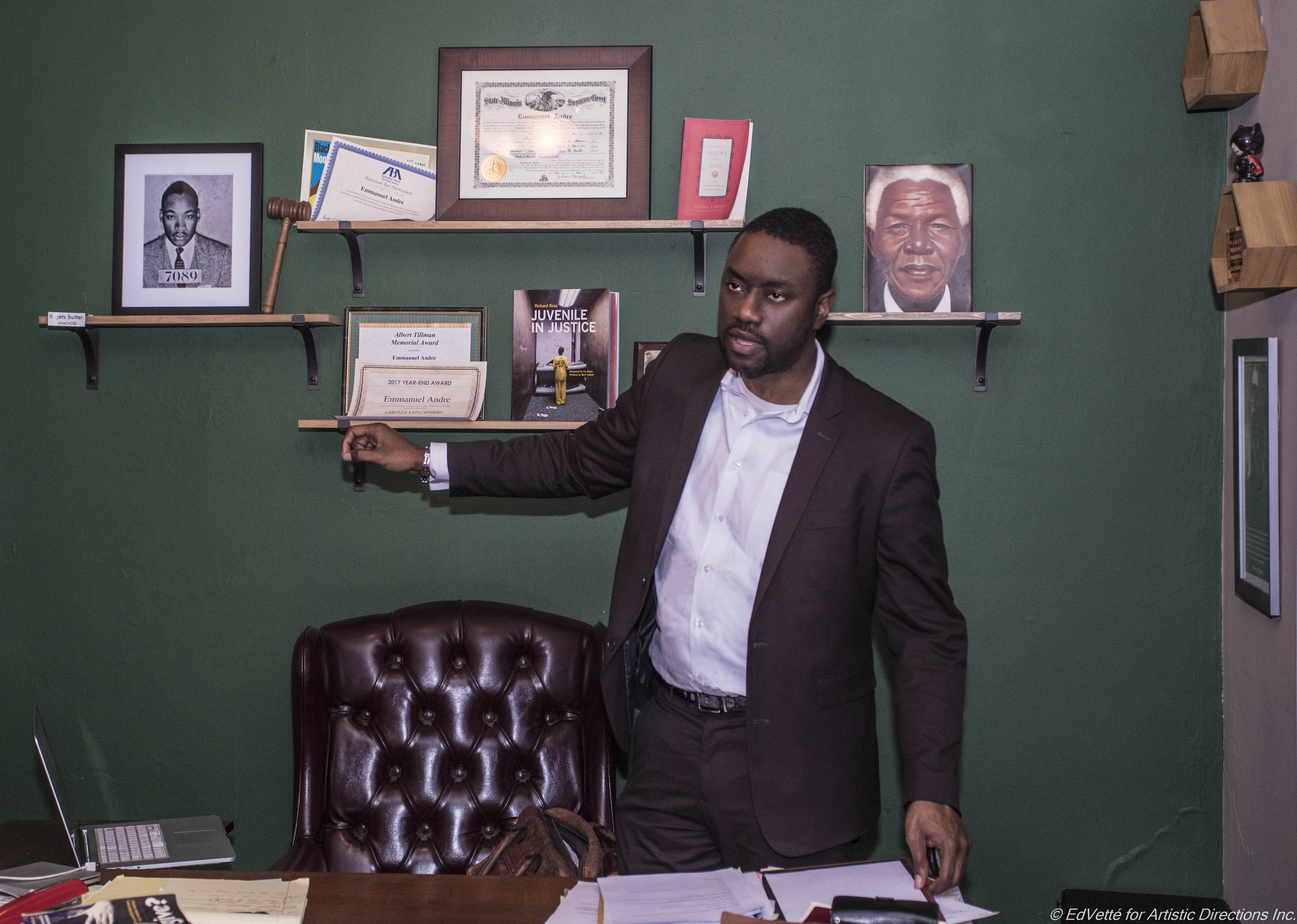
A string of these exchanges would be required before Emmanuel; Ann Marie Brown, Hub Director; Edvetté Wilson Jones, Resident Photographer; and myself were able to sit down for a group discussion about the particulars of documenting Envisioning Justice. Beyond being a professed value, “restoration” exists as an unceasing intentional practice within Circles & Ciphers, as evinced by our first meeting. Unhindered by digital screens and emotional distance, we were able to mend the ruptures and misunderstandings which had occurred earlier. Every aspect of this norming process emerged through the lens of circle facilitation with a round of dialogue, questions, responses, suggestions, and closing thoughts.
The seeds of peacebuilding now blooming throughout Circles & Ciphers were incubated in 2010 under Project NIA where Ethan Ucker and Emmanuel Andre met during a restorative justice training led by Ora Schub. During this training, they discussed ways to use their newly learned skills to meet concrete needs within Rogers Park. A partnership with a group home in this community that was criticized by neighbors who perceived it as a haven for criminal activity became the prototype for their method of blending hip-hop culture, peace circle facilitation, and restorative justice practice. Their willingness to occupy a shared cultural medium and offer their own vulnerability created a stronger connection within those circles.
Of this time, Emmanuel notes, “a lot of it was really trying to create a space where we can be in community and continue to offer radical hospitality with young people and really look at what does healing look like?”
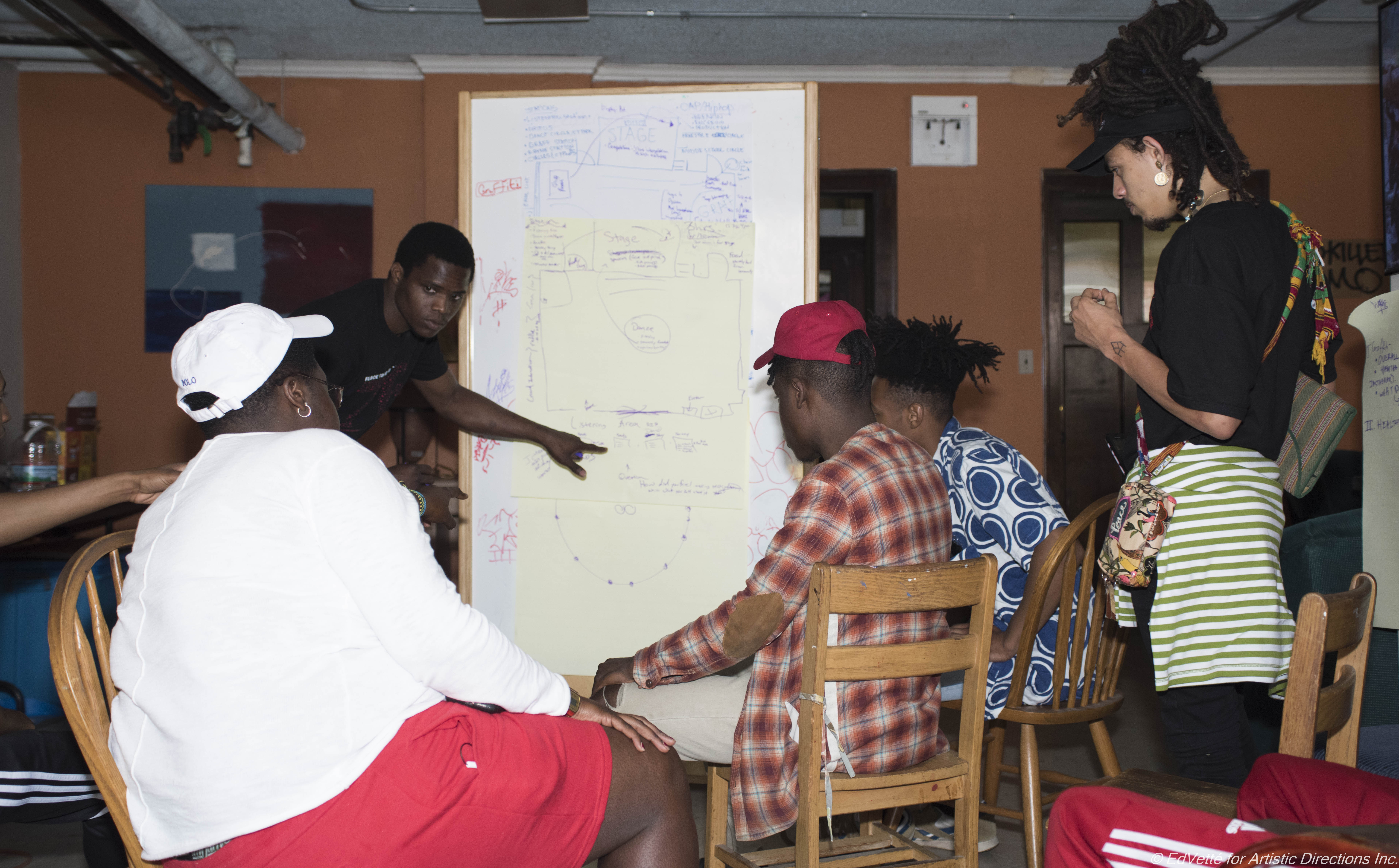
While Emmanuel holds the title of “Co-Director,” he referred to himself in our introductory conversation as “just a guy in a suit.” His jovial phrasing aligns with a core value of Circles & Ciphers which the organization articulates as seeking to: “honor the voices of young people as being the best way forward.”
Atena Danner of Chicago Childcare Collective, a volunteer-run initiative offering childcare for radical spaces, asserted during a dialogue in 2015, “Our society typically diminishes children as not part of any community other than childhood.” Circles & Ciphers shifts the relational dynamic by inviting and foregrounding those voices in any planning, operational, and decision-making capacities for the organization.
Programming for Envisioning Justice is structured to run three days throughout the week touching upon what Circles & Ciphers have outlined as the five pillars and roots of H.I.P.H.O.P., an acronym meaning Healthy Independent People Helping Other People. These five pillars are: DJing or production and record mixing; B-boying/B-girling or dance and movement; MCing or rhyming and poetry; Graffiti or visual artistry and tagging; and Knowledge or an awareness of oneself. Throughout the course of their programming, Circles & Ciphers hope to explore “how each pillar over time has been a conduit for oppressed people to resist and fight for an end to the criminalization and incarceration of [the] poor, low income and people of color.”
Emmanuel and myself sat down for our interview following a planning session in which Envisioning Justice teaching artists were developing the schedule and layout for the culminating event of their first session. This level of autonomy and self-determination is in stark contrast to the coercive social control presented by a carceral state. Emmanuel reflected further on the importance of bringing dispute resolution back into a communal context: “if we get into a conflict, depending on how far the conflict goes, we can’t even resolve it ourselves. And you know, if you punch me or if I punch you, cops come and get involved. One of us is going to get prosecuted. Sometimes they don’t even need our consent.”
In a world inclined to marginalize the voices of young people, Emmanuel imagines a time when we discard what Audre Lorde coined “the master’s tools,” such as age-based social hierarchies, and instead lean on the leadership of those whose future is transformed by the decisions we make today.
Emmanuel gave voice to this concern in telling us, “as you know, some of the elders … some of the professionals, I think we’re the ones who stand in the way a lot of the times. ‘Oh, no, you can’t do that.’ … and we’re stifling creativity. We’re stifling the freestyle. We’re stifling the art. And I think the future of justice has to be one that’s fundamentally sort of an artist’s way of doing things. In an artist’s way, there’s sometimes not a playbook per se.”
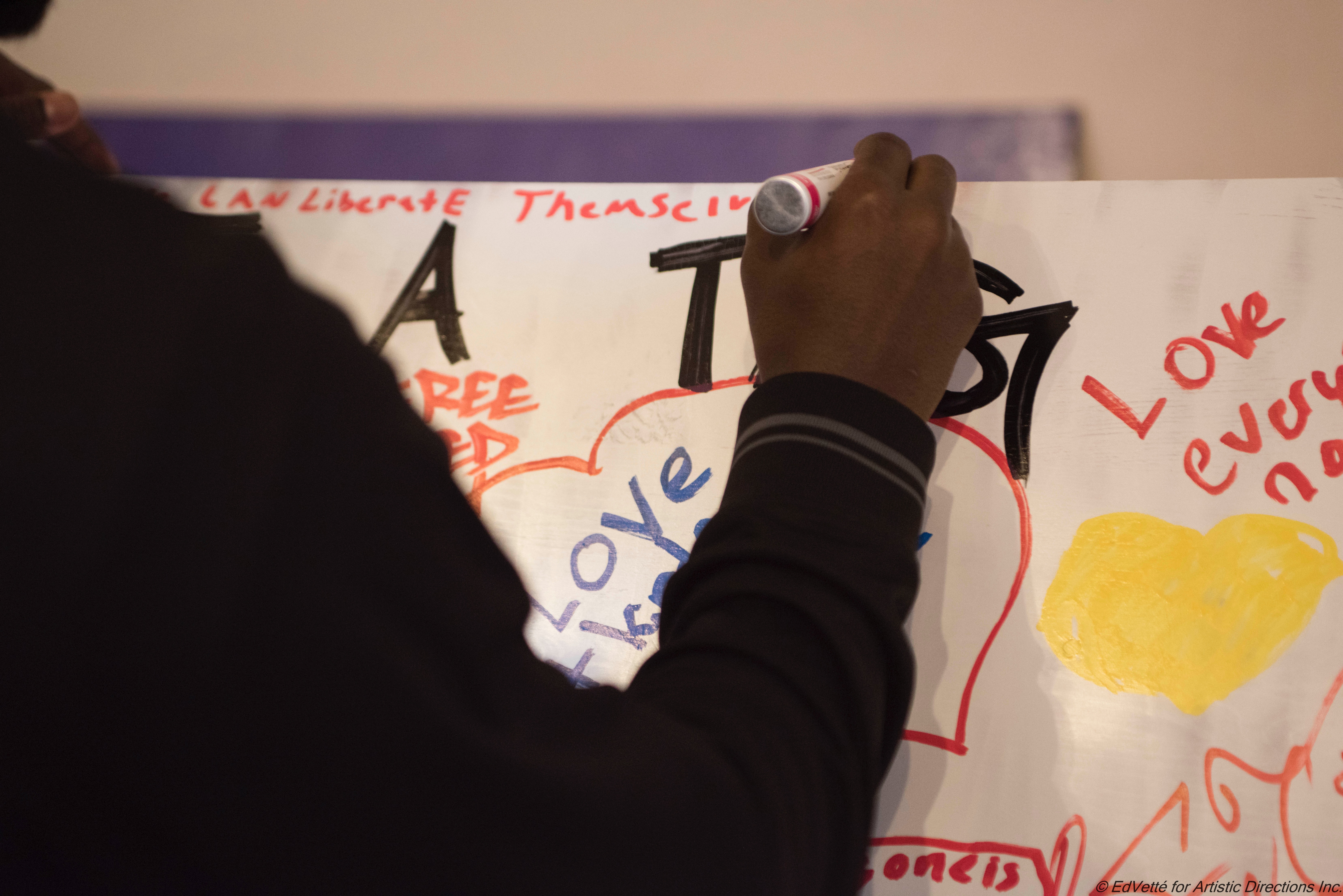
Our current approach to social transformation is rooted in a complex relationship between large grant-making entities and non-profits who are urged to rapidly prototype community models which can be scaled for use in distant places. Emmanuel cautions us in seeking institutional solutions which assume all communities are the same: “we got to be careful about the butterfly effect as some big institution running around with this big old net trying to catch these butterflies because a lot of times it’s us. It is how we handle interpersonal conflict and how we’re so easy to sign away all … autonomy and not ask for accountability from the players.”
Hip hop culture has long suffered a criticism for reflecting destructive tendencies also present within our larger society. Questioned as to how Circles & Ciphers processes these elements through the lens of peace circles, Emmanuel reminds us that we all swim through the same waters: “a lot of it is about having that space for a young person to bring that in and for us to discuss that; push back on it. ‘What does this mean?,’ ‘Well, this is how it relates to me.’ ‘This is what I think about it.’ But you listened and you read it. You listened and you read it. You was witness. And sometimes that’s the biggest piece. You was witness. From my experience, we don’t witness. A lot of Black boys in Chicago are not witnessed until death or incarceration.”
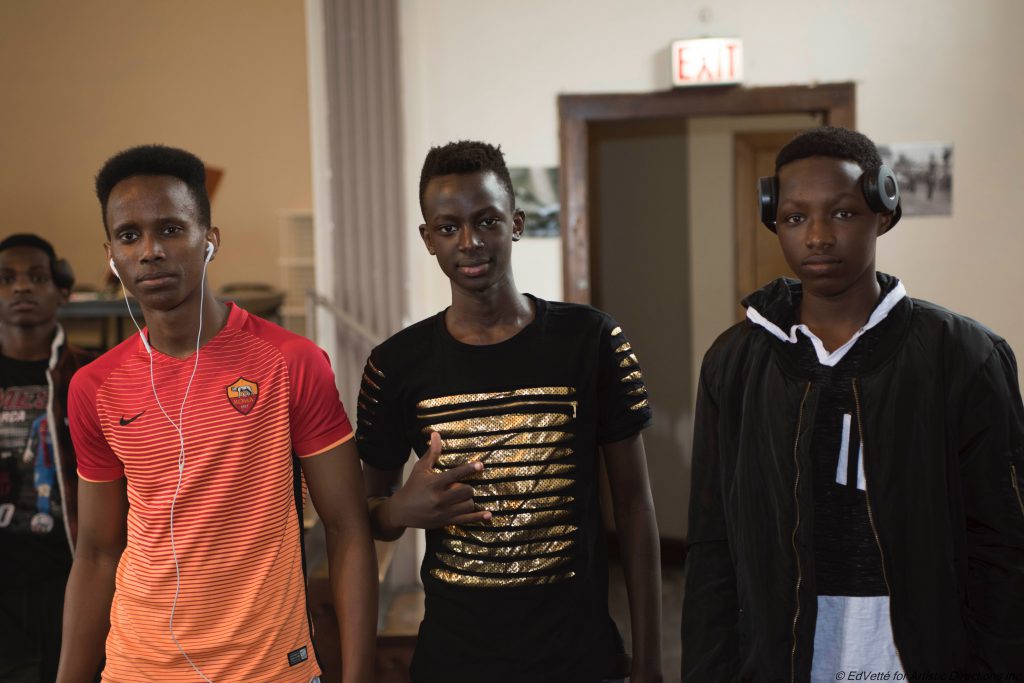
WITNESSING PERSONAL IMPROVEMENT: “Stay focused. If you don’t want the best for yourself, then there’s nobody who’s going to want the best for you. You gotta focus on bettering yourself everyday. Learn from your mistakes and make better decisions.” – Brandon, attendee at Envisioning Justice Open House event on April 18, 2018.
WITNESSING THE VALUE OF CIRCLE: “I think it’s a chance for people to get things out. They don’t have an opportunity to speak their minds. Or they don’t have open-minded people. One thing in common that we have, we’re all open-minded. We’re all able to take in other people’s opinions and other people’s ways of life. We don’t negatively judge them. We don’t criticize them. We just take them in.” – Ethan, attendee at Envisioning Justice Open House event on April 18, 2018.
For more information about Circles & Ciphers, please visit their website or Facebook page. Peace Circles catering to various social and gender identities are hosted by Circles & Ciphers on a bi-weekly rotation at United Church of Rogers Park: Young Men, Women (and Femmes) of Color, Community, and Freestyle. A full schedule and description of these circles are available for review on their website. Circles & Ciphers has also trained up a cohort of Restorative Justice youth practitioners who are available to consult with schools and community groups seeking to bring circle facilitation to their space. To explore these practice sharing options, contact circles.ciphers@gmail.com.
Video: In a 2013 presentation at Chicago State University, Emmanuel Andre and Ethan Ucker explain the historical foundations of Circles & Ciphers’ practice and process as a model for how communities might reengage young people in the fabric of social life using restorative justice and peace circles.
_
This article is published as part of Envisioning Justice, a 19-month initiative presented by Illinois Humanities that looks into how Chicagoans and Chicago artists respond to the the impact of incarceration in local communities and how the arts and humanities are used to devise strategies for lessening this impact.
Featured Image: KNOWLEDGE of Self Course Teaching Artist, Sherrif Polk, leads community in a line dance during the culminating event for the first session of Envisioning Justice at Circles & Ciphers. Photo by Edvetté Wilson Jones.
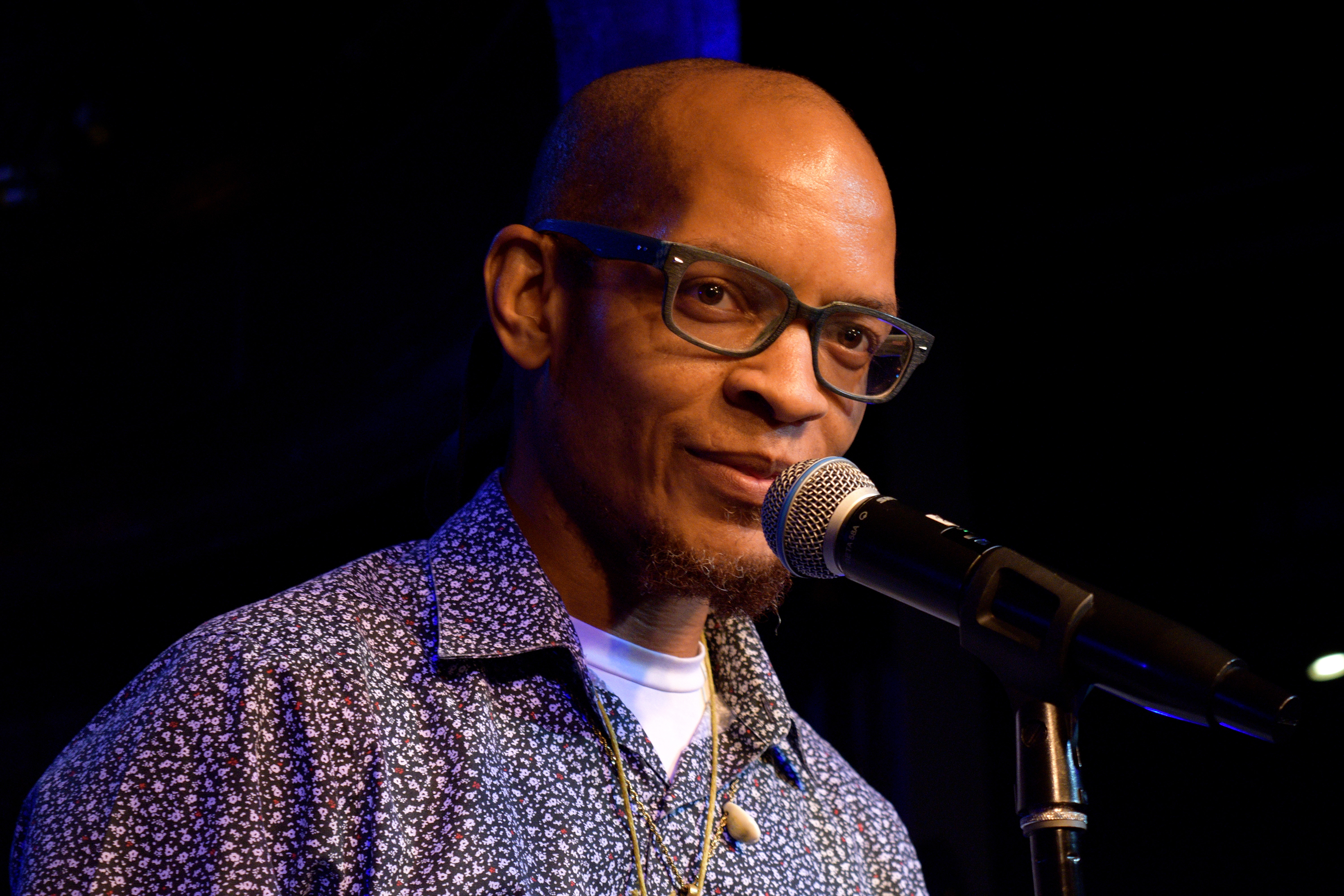 Mike Strode is a writer, cyclist, IT consultant, and collaborative social economist residing in southeast Chicago whose community engagement work has included ride leadership with the Chicago chapter of Red, Bike & Green; editorial and archival oversight for Fultonia; and co-facilitation of Art Is Bonfire. His current practice draws on all of these experiences to interrogate the intersection of timebanking, social economy and community resiliency. His grounding philosophy is mycelium, collaborative agility, empathic individualization, and all things human glue. He is founder and Exchange Coordinator of the Kola Nut Collaborative, a time-based skills and service trading platform which seeks to advance conversation on timebanking, community currency design, and social economy in Chicago. The Kola Nut Collaborative maintains a robust web presence with articles, programming, and research on myriad aspects of social economy.
Mike Strode is a writer, cyclist, IT consultant, and collaborative social economist residing in southeast Chicago whose community engagement work has included ride leadership with the Chicago chapter of Red, Bike & Green; editorial and archival oversight for Fultonia; and co-facilitation of Art Is Bonfire. His current practice draws on all of these experiences to interrogate the intersection of timebanking, social economy and community resiliency. His grounding philosophy is mycelium, collaborative agility, empathic individualization, and all things human glue. He is founder and Exchange Coordinator of the Kola Nut Collaborative, a time-based skills and service trading platform which seeks to advance conversation on timebanking, community currency design, and social economy in Chicago. The Kola Nut Collaborative maintains a robust web presence with articles, programming, and research on myriad aspects of social economy.
